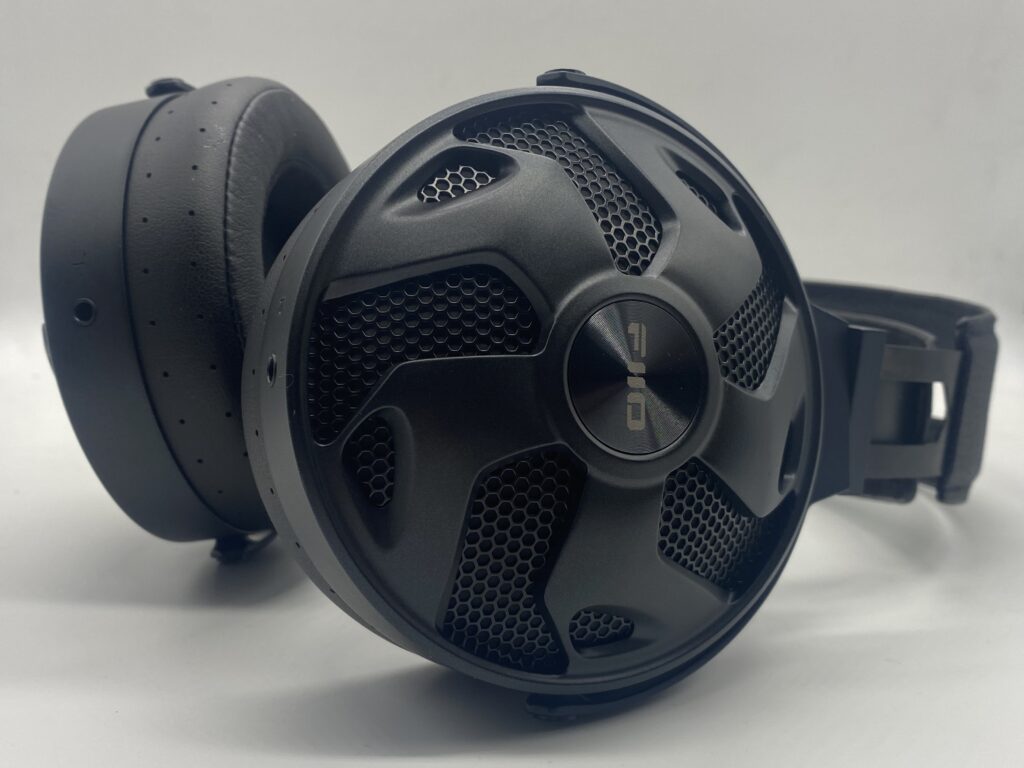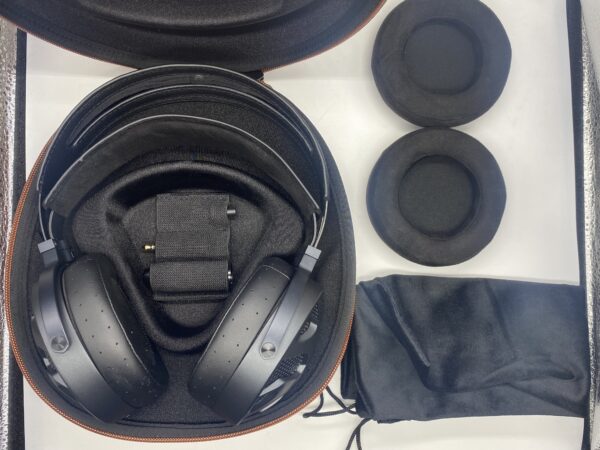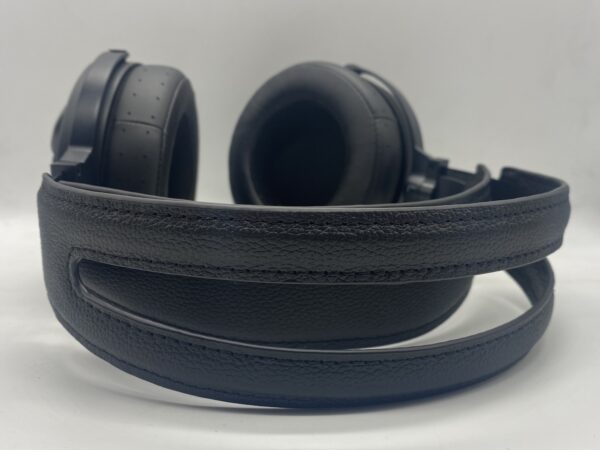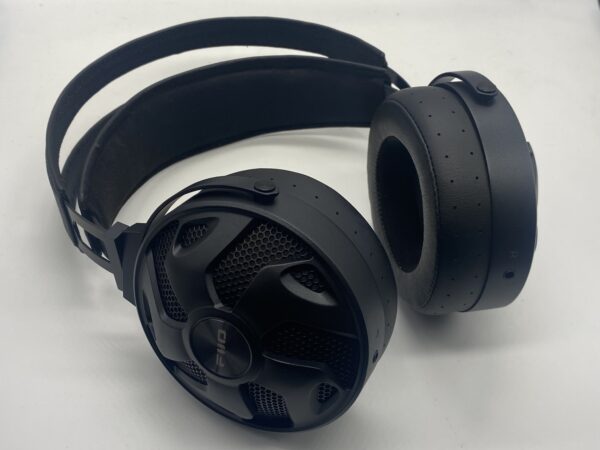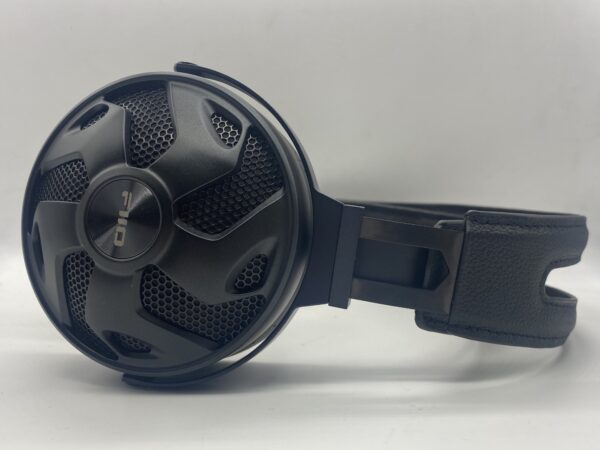I’ve tried a lot of different products from Fiio over the years. Their IEMs, DAPs, and amplifiers have been big successes, and now they are finally adding a new set of headphones to their catalog. The FT3 are open-back reference headphones for $299. It is intended as a reference headphone for mixers, as well as those looking for a clean and unaltered sound signature. Let’s see if Fiio can deliver.
What You Get
- FiiO FT3 Open-Back Planar Headphones
- Hard Leather Carrying Case
- Soft Carrying Pouch
- Suede Earpads (default)
- Protein Leather Earpads (included)
- 3 Meter Headphone Cable with Nylon Insulation
- 3.5mm Unbalanced Jack
- 4.4mm Balanced Jack
- 6.35mm Unbalanced Adapter
- 4-Pin XLR Adapter
Look & Feel
Fiio products usually have a solid build with a good aesthetic flourish. For the FT3, I’m not huge on the style of the cups. They’re a good size, and the switchable ear pads are great, but the shells kind of look like a fan to me. The frame of the FT3 is very nice though, with its thin aluminum alloy construction and suspension headband that gives the headphones a sturdy makeup. These are smaller ear cups than I imagined but still fit well and snugly on my head. It doesn’t really strap tightly to you, but the lightness keeps things very comfortable.
Design
Underneath the hood, the FT3 packs a 60mm dynamic driver. A driver that big needs a pretty serious diaphragm, and the FT3 supplies that with its combination of a beryllium-plated gasket, and a Diamond-Like Carbon(DLC) materials to make up its diaphragm. The lightness of this diaphragm results in less distortion and soundstage dynamics. This is one of the hardest-to-drive headphones in this price range minutes the 600 Ohm version of the Beyerdynamic DT 880. For the FT3, you’ll need an amplifier that can drive 350 Ohms.
Soundstage
Being a reference headphone, the FT3 isn’t going to be about an immersive, holographic soundstage. It has a specific job to do in communicating stereo positioning with grace. All of the sound elements should be easy to localize with enough space in between to highlight individual performances. That is the type of soundstage and spatial imaging the FT3 puts on display so successfully. Everything in the mix is presented as linear, but all of the layers are clearly organized. The open-back design of the FT3 doesn’t add a lot of extra width or dimension to the sounds, but it definitely still helps a lot with separation and depth. It’s an open headspace where all of the sound elements can perform in their intended space without appearing too clinical. I think this soundstage is great for the price range, adding to the fact that this is also a flat response doesn’t make its character too boring. You should be able to enjoy listening to the FT3 casually, as well as for pinpoint accuracy.
Low End
Those who are looking for the flattest bass with the least amount of pop will be happy with the FT3. There are some reference headphones out there that give you more bass texture to bite on while you’re trying to listen critically, but not the FT3. This is a very bare low-end response, benefiting listeners who want analytical balance, but offers little flavor to casual listeners. All of the detail is there, but it’s presented very safely. Everything about the timbre is clean and easy to understand, but for some, it might be too sterile. A helping of sub-bass might have benefited the tone a bit more, but the sound signature is confident enough in its reference that it might not be an issue.
Mids
In the mids, the FT3 is almost like a straight line drawn across each range of frequency. It’s not as simplistic as the bass though, as the upper-mids actually showcase some nice flavor to the mix, particularly with vocals. Instruments show more signs of emphasis and accentuation while still keeping the timbre flat and balanced. Specific notes have a more concise strike to them, enhancing transparency in the performances. There’s more than enough room in the midrange for everything to come through articulately, especially vocals, which have a vivid and forward presentation.
Highs
It’s the high frequencies that are going to offer the most flavor in this sound signature. That doesn’t mean it’s bright or overemphasized like you might perceive from Beyerdynamic’s headphones. Instead, you get some light sparkle, showcased by crisp hi-hats, bells, and tambourines. They have a delicate texture that features some comfortable air and height too. It sounds like the most open range of frequency in the sound signature, while still maintaining an even presentation.
Summary
The Fiio FT3 does exactly what it needs to do and a bit more for a reference headphone in this price range. While some of the frequency response is a bit too dry, like the bass and low-mids, other areas give you a form of accuracy you can really bite on. The treble and vocal response is very expressive for a reference headphone, and the great imaging adds even more room for everything to come together in an organized fashion. It’s a good build, even if the FT3 isn’t the most stylish pair of headphones around. As long as you have the proper amp to drive them, the FT3 is great for a clean, accurate sound.
The Fiio FT3 is available at Audio46.

